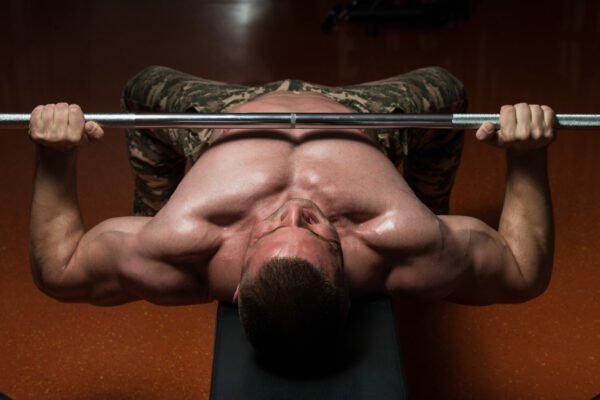Everyone knows bodybuilders have to train hard, but did you know there’s more to it than just lifting weights? Bodybuilders must also be concerned with the factors contributing to muscle hypertrophy. These are mechanical tension, muscle damage, and metabolic stress. So what steps should a bodybuilder take to ensure that each is accounted for?
Mechanical Tension
Mechanical tension is the force a muscle exerts on the bones to which it is attached. Muscle tension increases with increasing load, movement speed, and muscle length.
Mechanical tension is significant because it helps activate cellular processes within your muscles that lead to growth. For example, mechanical stress is applied to the tissue when a muscle contracts forcefully in response to an external stimulus. This causes biochemical reactions in your cells that increase protein synthesis (the process of building new proteins) and reduce protein degradation (the breakdown of existing proteins).
Strategic pauses can also increase mechanical tension, such as in the bottom position of the bench press (stretch), immediately after the lift-off in the deadlift, and at the top of the hip thrust’s range of motion.
The specifications for mechanical tension are as follows:
- Sets: 3-9
- Reps: 3-8 or 5-12
- Tempo: 4/1/2/1 or 2/1/3/1
- Rest Time: 2-3 minutes
Tempo is defined by how long it takes to perform each lift’s eccentric, isometric, and concentric movements. The isometric part exists at the top and bottom of each lift. Therefore during a bench press, if it takes 4 seconds for the eccentric (stretching move), 1 second for the isometric (pause), and 2 seconds for the concentric (contracting movement), the tempo is 4/1/2/1.

Muscle Damage
Muscle damage is one of the factors that contribute to muscle hypertrophy. Moreover, Muscle damage can be caused by a single bout of exercise, multiple bouts, or weight training.
- Muscle damage occurs when tension and eccentric contractions cause microtrauma in muscles. This leads to an inflammatory response in your body.
- Over time, this inflammation causes the release of growth factors like testosterone and HGH, which lead to increased protein synthesis and muscle growth.
The following is an example of a muscle damage routine:
Sets: 3 – 6 (based on training intensity)
Reps: 8-12
Tempo: 4/1/2/1
Rest Time: 1–2 minutes
Metabolic Stress
It’s what happens to your body when you push it harder than it’s used to. Metabolic stress is a term used by bodybuilders and fitness enthusiasts to describe working out at high intensities, which causes an increase in fat-burning and muscle-building hormones. Muscle hypertrophy (growth) occurs due to these hormonal changes, leading to bigger muscles over time. Metabolic stress can also be caused by dieting or fasting, but this article focuses on exercise as the primary means for producing metabolic stress for maximum growth results. Add deliberate pauses to the bottom position of these lifts to increase metabolic stress even further.
Take sets to momentary muscle failure for moderate to high reps while allowing only a brief amount of recovery in between to maximize the pump.
An outline of a pump routine might be:
- Sets: 3 – 10
- Reps: AMRAP (as many reps as possible)
- Tempo: 4/1/2/1
- Rest Time: 1 – 2 Minutes
Neurological Adaptation
Neurological adaptation is the brain’s ability to learn how to control a certain number of muscle fibers. For example, if you have seen someone lift weights, you know they have a specific range of motion and strength. That is neurological adaptation. The brain can only control a certain number of muscle fibers at a time, so increasing your neurological adaptation will increase the number of muscle fibers your brain can keep under control at one time. To improve your neurological adaptation:
- Use high-intensity training methods.
- Perform compound movements like squats and deadlifts

Slow and Fast Twitch Activation
There are two muscle fibers: slow twitch and fast twitch. Slow twitch muscle fibers are responsible for endurance activities and have an increased ability to use fat for energy. Fast twitch muscle fibers are responsible for explosive movements but have a limited capacity for endurance.
Bodybuilders can increase their hypertrophy by activating more slow-twitch muscle fibers while lifting weights. This will help them gain lean mass while increasing their endurance through aerobic activity too!
What Steps Should a Bodybuilder Take to Ensure Each Factor is Accounted for?
To achieve all three factors, you should use enough weight to create muscle damage, do enough sets and reps to cause muscle damage, and do enough sets and reps to cause metabolic stress.
If you want to make sure that your workouts are causing muscle hypertrophy for a bodybuilder, you must choose a weight at which you can only perform.
Workout to Build Muscle
A 2016 review found that twice-weekly workouts of the main muscle groups are sufficient for muscular growth. However, insufficient data supports the premise that training three times per week would result in more significant gains than training twice weekly.
For muscular healing, resting in between workout bouts is also crucial. According to a 2017 analysis, more extended rest periods are required to increase strength in people trained with resistance.
Strength training must be done consistently over weeks to build muscle. Muscle growth will be aided by progressively raising the resistance over time.
Difference Between Muscle Hypertrophy and Sarcoplasmic Hypertrophy
You’re probably familiar with muscle hypertrophy or increased muscle size due to increased myofibrils. However, did you know there are two types of muscle hypertrophy? Sarcoplasmic hypertrophy is the increase in muscle size due to the volume of sarcoplasm (the fluid-like substance inside your cells). Muscle hypertrophy, on the other hand, is when you gain more myofibrils and, therefore, more capacity for strength and power.
The Last Word on the Most Important Factors for Muscle Hypertrophy
In conclusion, many factors contribute to muscle hypertrophy. However, with enough time, patience and dedication, any bodybuilder can increase the size of their muscles by focusing on these critical elements. To build muscles, a bodybuilder needs to subject the muscles to frequent and intense weightlifting sessions. This calls for a proper training schedule and a well-planned diet. Nutrition is essential in stimulating muscle growth. Getting the proper nutrients and food sources can help build bulkier muscles.




